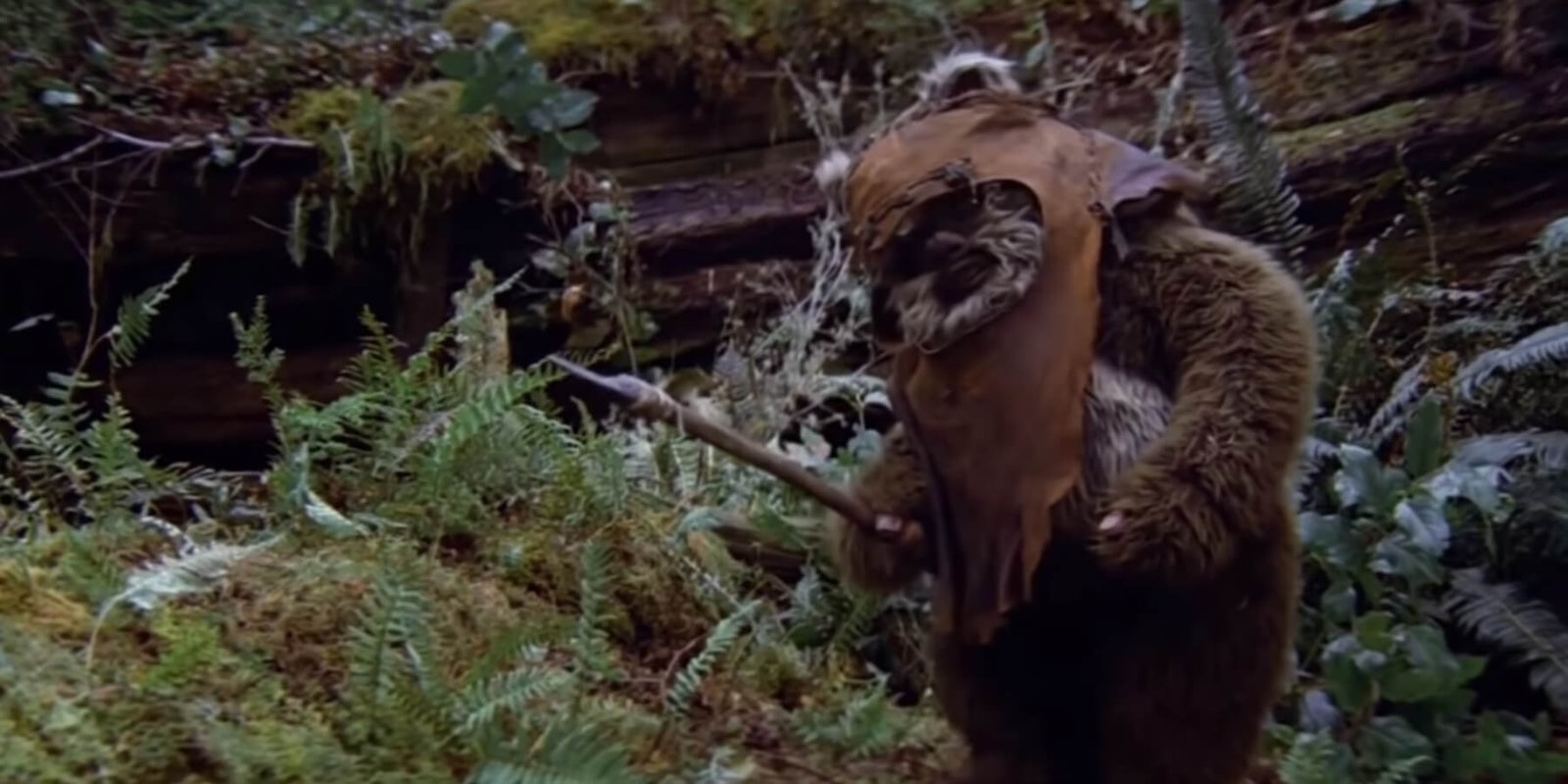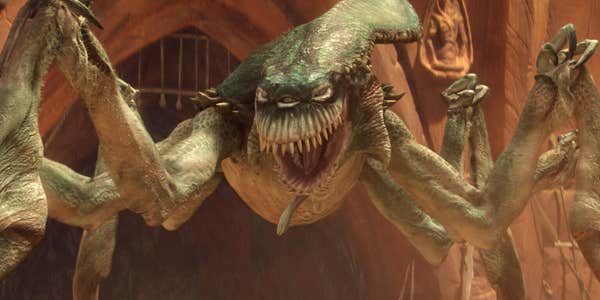More than 40 years ago, George Lucas introduced us to the sprawling world of Star Wars—and the Star Wars creatures.
He and the brilliant teams that fleshed out that world populated it with hundreds of diverse societies, races, and critters. With each new film, the Star Wars world gets a bit more fleshed out. Each film brings with it new revelations about the galaxy and often introduces fans to new creatures to enjoy.
Nearly half a century later, there are too many Star Wars creatures to keep track of. Between nine separate films, not to mention several standalone releases and numerous spinoff series, there are more than enough fascinating critters to keep us busy until the next Star Wars trilogy is announced.
So we’ll indulge in just that: Here are some of our favorite Star Wars creatures.
Cute and cuddly Star Wars creatures
Many of the creative creatures wandering the vast expanses of Lucas’ galaxy are ferocious, deadly beasts. Some, however, seem carefully crafted to make audiences squeal in delight—which, you know, they probably were. These tiny, squishable Star Wars creatures may not have as many uses as a Bantha or as many teeth as a Sarlacc, but we love them anyway.
Loth-Cat
They aren’t as recognizable as some of the other creatures on this list, but loth-cats are some of Star Wars‘ cutest creatures. These odd little felines have the appearance of a lynx combined with some kind of burrowing animal. Natives of Lothal, a planet of vast grassy plains, they tend to wander in packs.
These critters cropped up in the animated Star Wars Rebels series, a somewhat niche spinoff that is remarkably popular among viewers: The series has a staggering—and nearly unheard of—100 percent rating on Rotten Tomatoes, and reviews from fans are overwhelmingly positive.
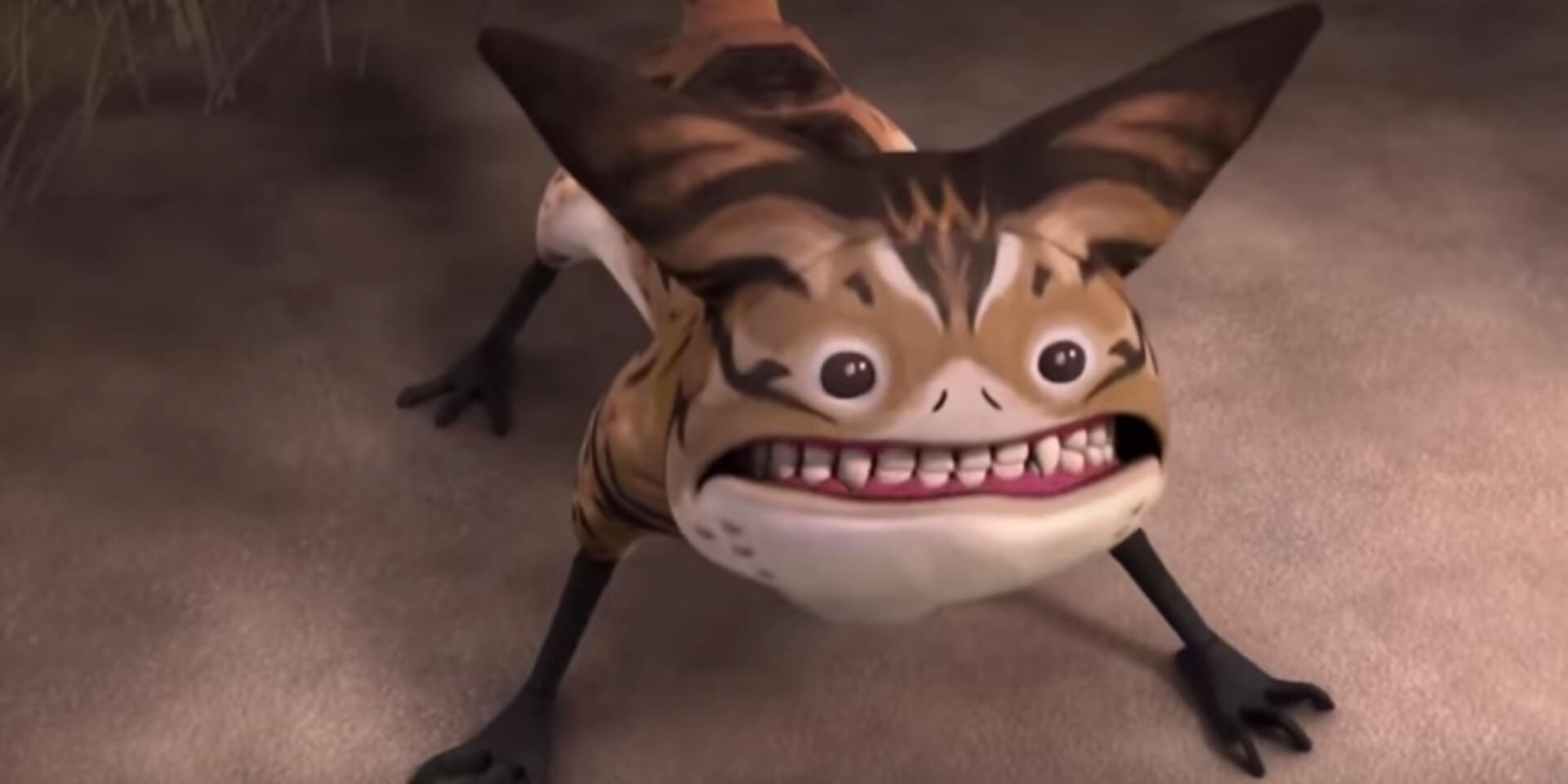
Members of the Tooka family, loth-cats are cousins to several other fuzzy felines. Just like most cats, loth-cats are temperamental and occasionally violent. They can be tamed but not without some real effort. Capable hunters, they tend to feast upon the rats that heavily populate their home planet. Due to their intelligence and malleability, loth-cats can be excellent Force-companions.
Vulptex
Stunning foxes covered in white, crystalline bristles, vulptices appear to be carved from glass. The first of these breathtaking Star Wars creatures showed up on Crait, the species’ home planet, in The Last Jedi.
Their crystalline fur is rumored to have developed thanks to their diet on the mineral planet they call home. According to The Last Jedi‘s creature effects supervisor, Neal Scanlan, feeding off their planet led to their spiky appearance. “They’ve taken on the very surface of the planet they live on,” he said.
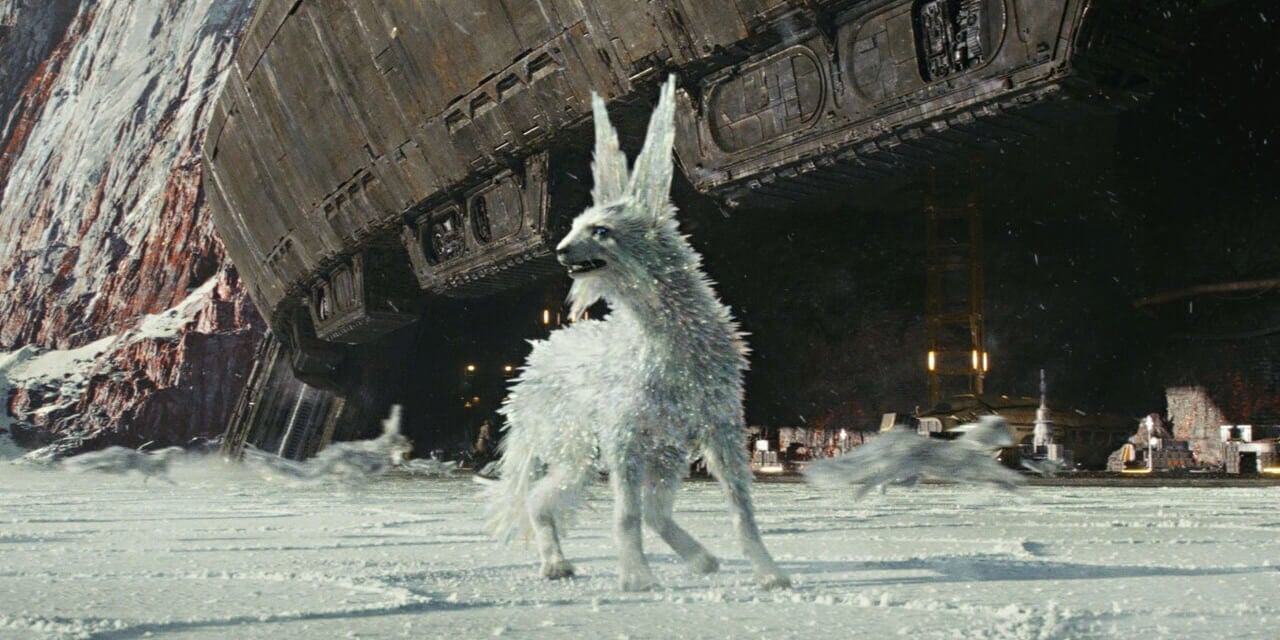
These charming foxes may look supremely touchable, but you wouldn’t want to get too close. Those spiky bristles look like they hurt. Their bristles protect vulptices from predators when they can’t use their keen senses to avoid detection. Excellent vision, even in low-light, helps the clever critters keep their bearings almost anywhere. Pack beasts, vulptices tend to wander in groups called “skulks.”
Porg
Trailers for The Last Jedi introduced us to the porg. These charming space-puffins were an instant hit among fans, who flocked to theaters to see what the flappy little goobers would lend to the story. It turns out not much, but that doesn’t make us love them any less.
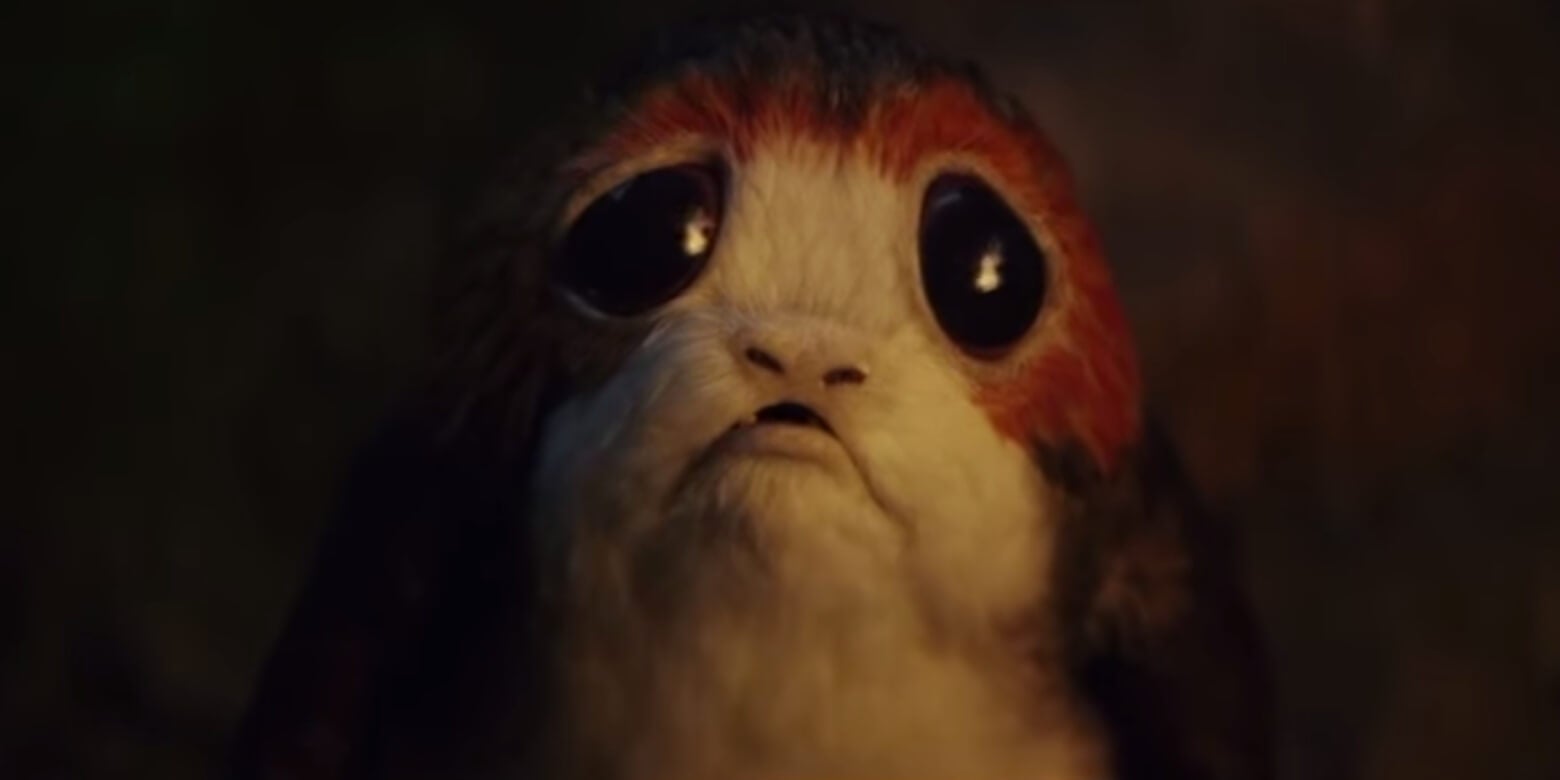
Giant, beseeching eyes take up nearly half of a porg’s tiny, feathered face. The avians dwell near the sea, where they build nests along cliff sides. Capable of making brief dives into the water, porgs often hunt crustaceans and small fish. Natives of the planet Ahch-To, these big-eyed birds are fascinated by all things shiny and new. They serve very little purpose other than to be adorable, which is more than enough for us.
Anzellan
We don’t know much about the latest addition to the Star Wars creatures list. Regardless, fans are already prepared to love these little engineers with all their hearts. The final trailer for The Rise of Skywalker, out Dec. 20, gave viewers a brief glimpse of the teeniest droid smith they’d ever laid eyes on. The anzellan, named Babu Frik, sparked interest immediately.
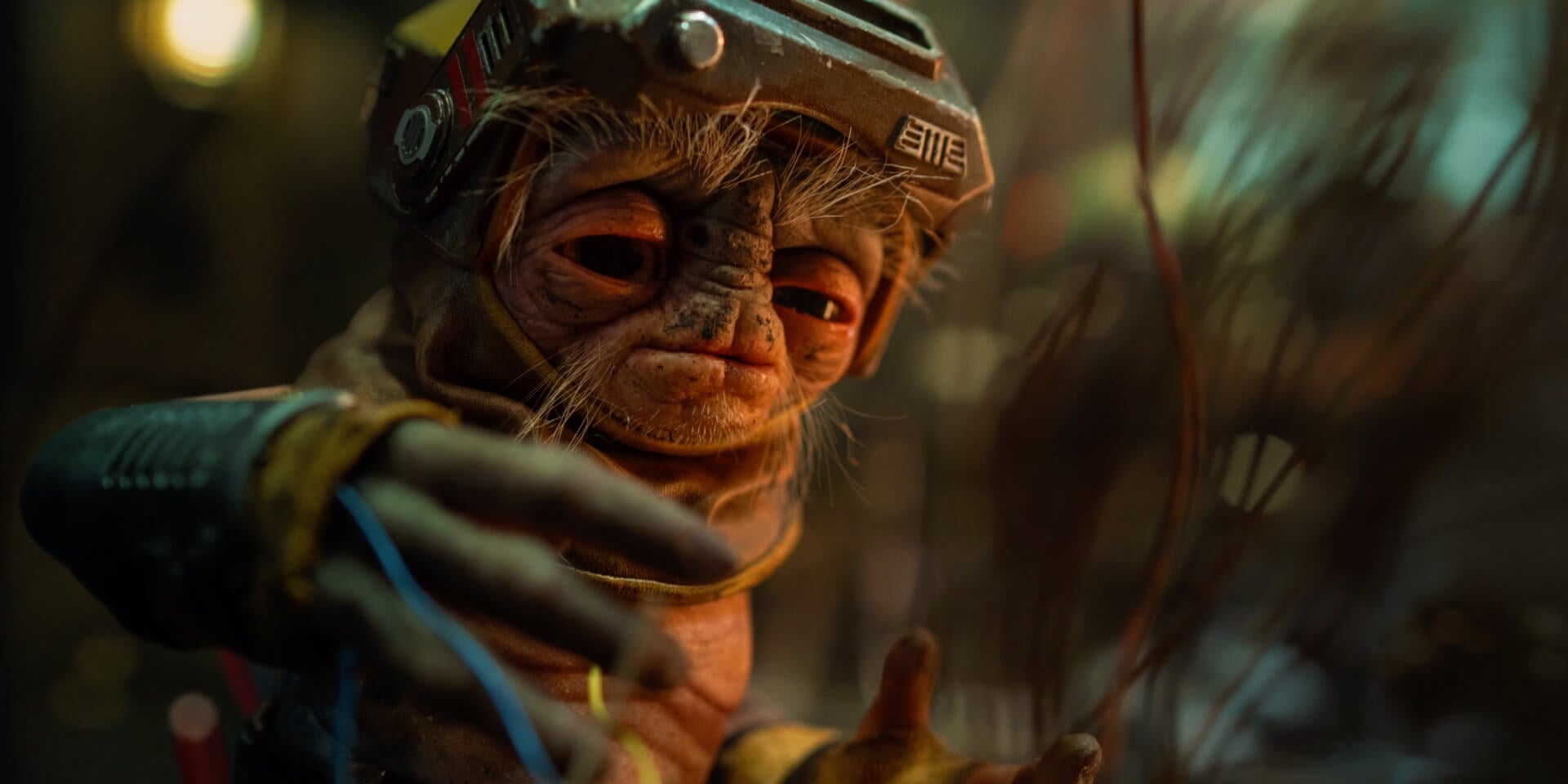
Anzellans are a diminutive species of currently unknown origin. Thus far, the only anzellan fans have been introduced to is Babu. If we can treat the tiny alien as a rule for his race, they are skillful engineers with a talent for repairing and altering droids. We don’t yet know how important a role the little guy will play, but fans are hoping to see a lot more Babu when December rolls around.
Ewok
Even those rare humans who know almost nothing of Star Wars are familiar with these savage little fur balls. Ewoks first charged into our homes and hearts in 1983 with Return of the Jedi. The stubby race resides on the sparsely populated forest moon Endor, where they are the dominant species.
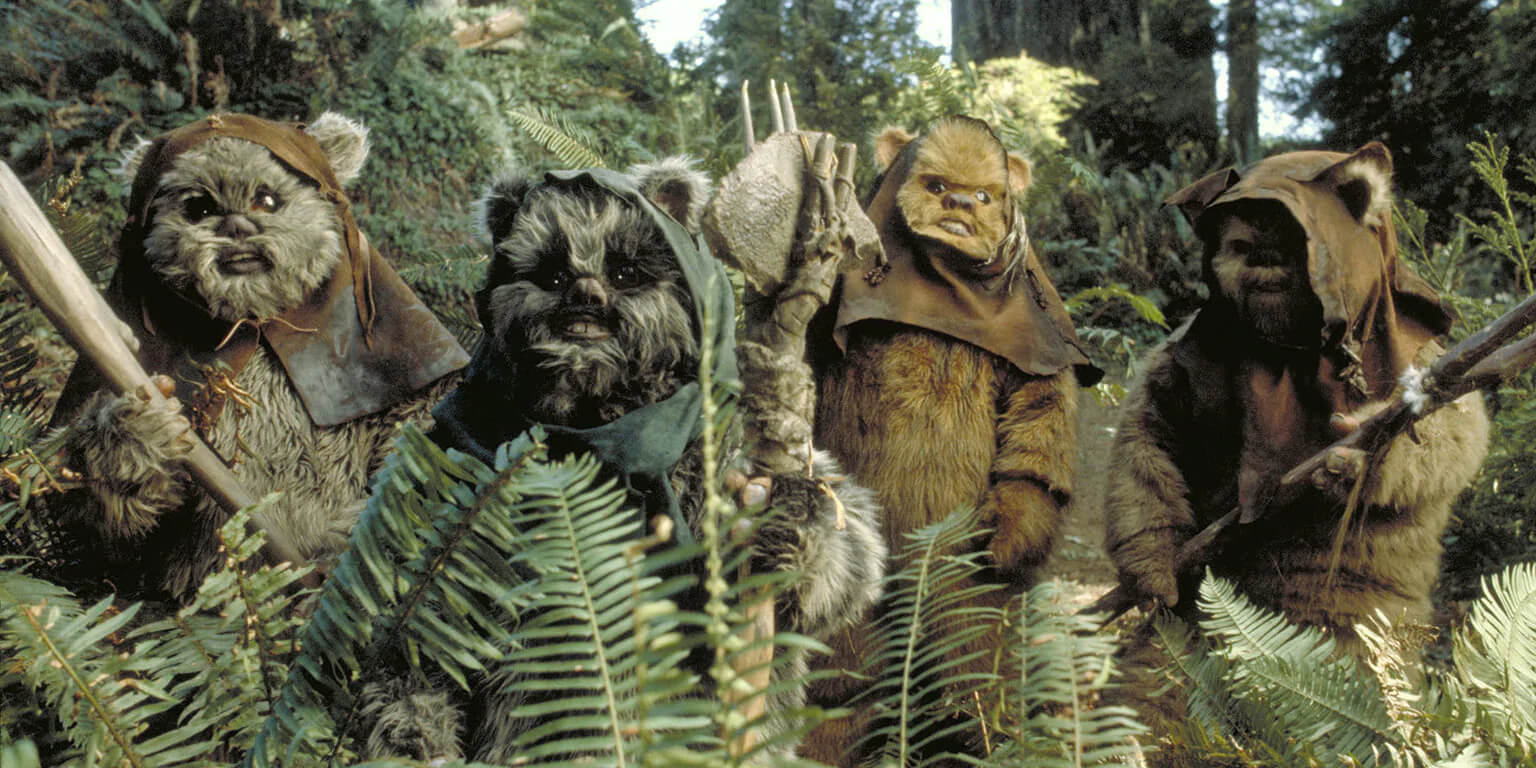
Though Ewoks have never progressed beyond Stone Age technology, they are surprisingly formidable warriors. These bipedal furry omnivores are shockingly strong, capable of overpowering fully grown humans despite their small size. Their isolated home world is far from most outside interference, keeping these lethal teddy bears mostly to themselves.
READ MORE:
- The best order to watch the Star Wars movies
- Disney’s streaming service will be a game-changer: Cost, features and more
- Star Wars: The complete movie calendar
Rideable Star Wars creatures
While half of the fandom loves squealing over the tiny whiskered faces of the galaxy’s most adorable creatures, other fans are more interested in Star Wars creatures with a purpose. Throughout the franchise’s many films and series, characters have used a number of intriguing creatures to get around. From the instantly recognizable tauntauns to the more niche kaadu, there are more than enough rideable creatures in Star Wars to choose from.
Bantha
These massive, elephantine creatures are the perfect pack animal. While they may not make it to their destination quickly, banthas are strong, resilient beasts. They most closely resemble a wooly mammoth crossed with a big-horned sheep. The lumbering Star Wars creatures are native to Tatooine but have been specially bred all over the galaxy.
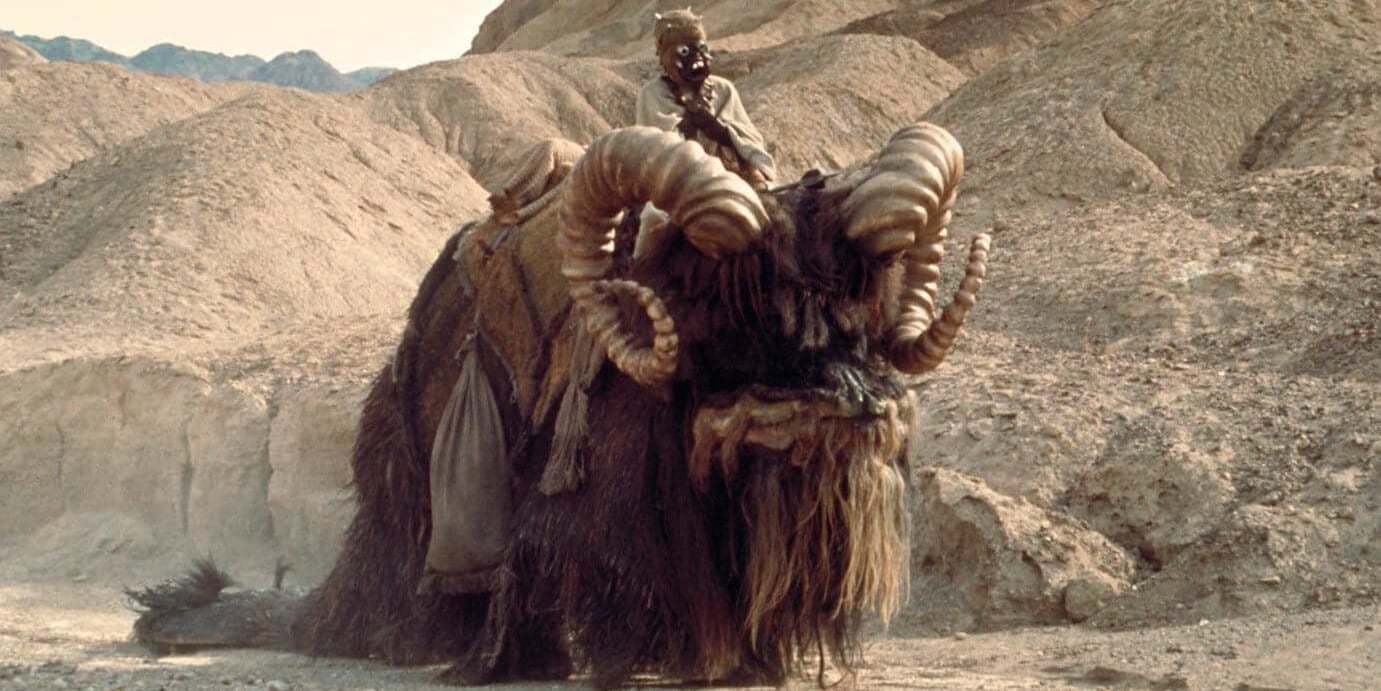
If you were looking for the source of the blue milk Luke and his family enjoy in A New Hope, you’ve found it. The shaggy mammals produce the milk and are often bred for their meat, milk, and fur. They thrive in desert environments, which makes them an excellent transportation choice for the Tusken Raiders. They ride them—in single-file to hide their numbers—all over the sprawling planet they call home.
Tauntaun
What kid hasn’t dreamed of owning their own tauntaun? The moment these furry snow camels appeared in Empire Strikes Back they became fan favorites. Fur-covered bipedal reptiles, domesticated tauntauns are docile and capable mounts. They aided the Resistance in its fight against the Galactic Empire.
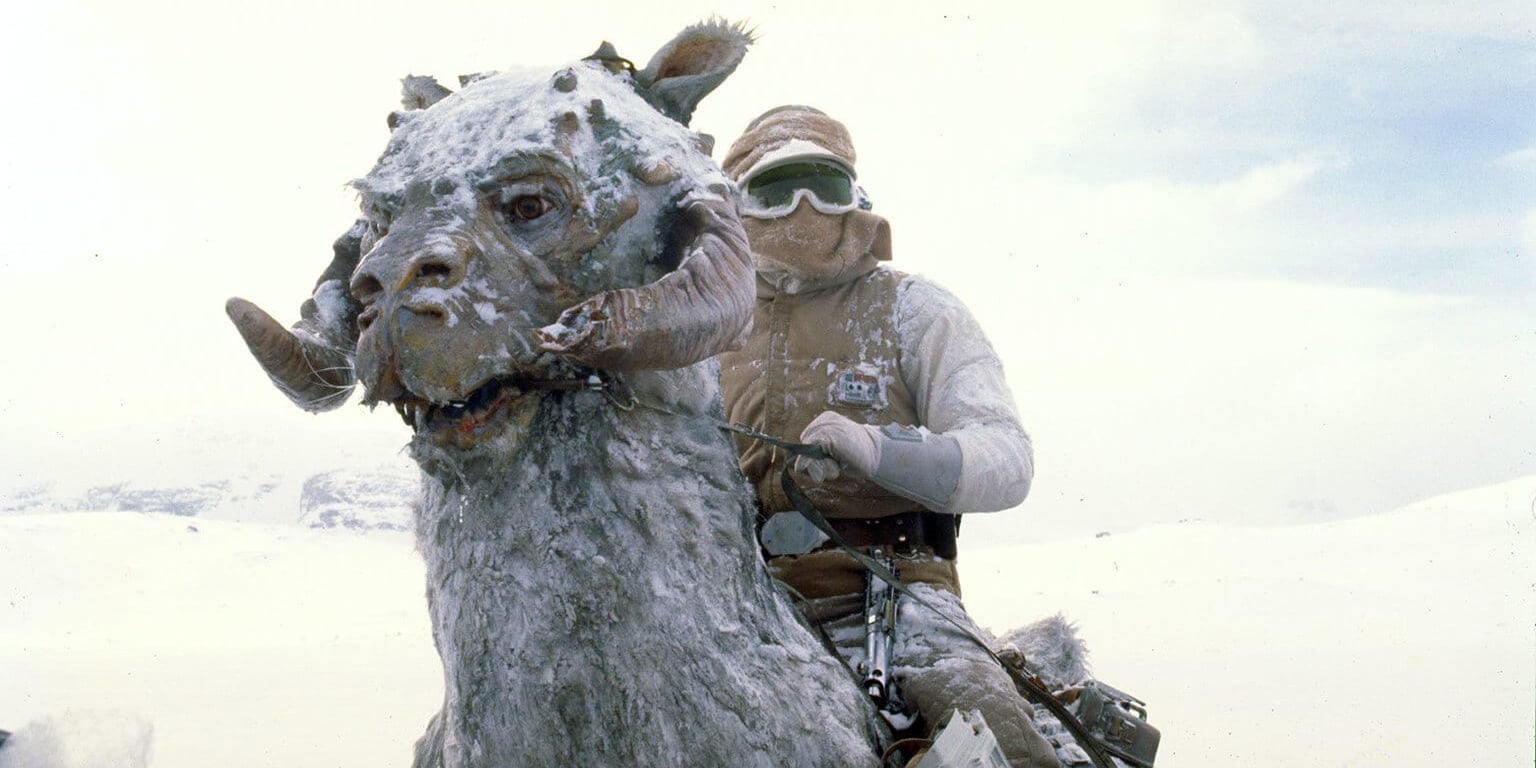
Natives to the icy planet Hoth, tauntauns thrive in cold environments. While they are fully capable of withstanding the daytime chill of their home planet, its nighttime temperatures dip too low even for them. Two sets of nostrils assist them with temperature regulation as well as in combat, running, and while grazing. They can reach up to 90 kph when running, even with a rider on their backs. Tauntauns also secrete a pungent, cloying oil to attract mates, which doubles as protection against many predators.
Kaadu
Native to the planet Naboo, kaadu are sleek and swift, like most things from the technologically advanced planet. Rather dinosaur-like with their reptilian-bird-hybrid characteristics, kaadu are the preferred mounts of the Gungans. They carried the Gungan Grand Army into battle in the fight against the Trade Federation.
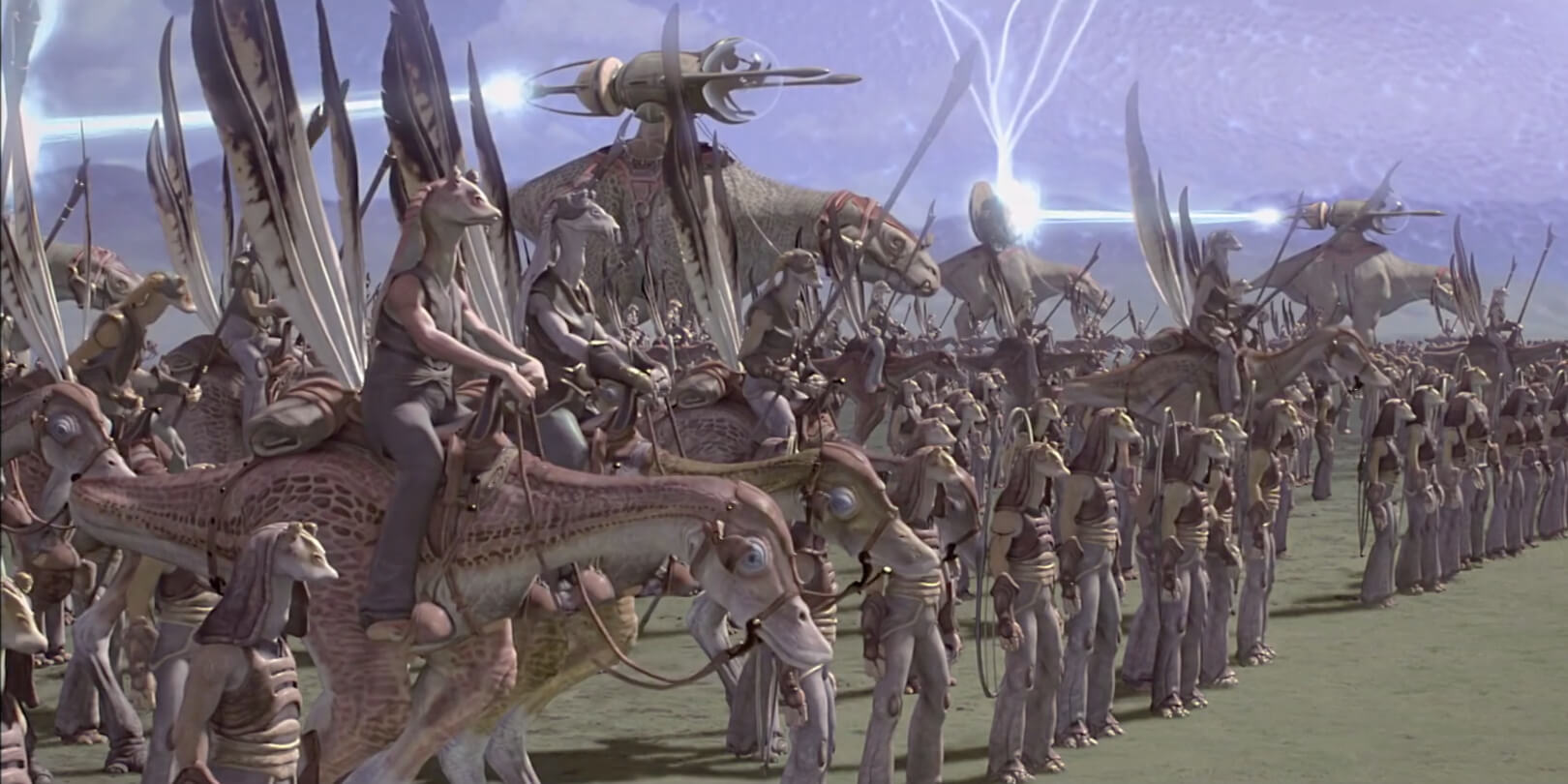
A bill-like mouth, similar to that of a platypus, allows kaadu to breathe underwater for hours at a time. The reptavian critters have smooth skin to make aquatic movement easier. Training a kaadu is a rite of passage for many Gungans, who use the creatures to boost themselves in battle and transport.
Varactyl
When it comes to giant, reptilian mounts, it’s hard to beat the varactyl. These stunningly majestic herbivores are natives of the planet Utapau. Seemingly fearless, they are loyal and obedient mounts. Their sure-footedness comes in particularly handy on uneven terrain, and they can even climb sheer walls with ease.
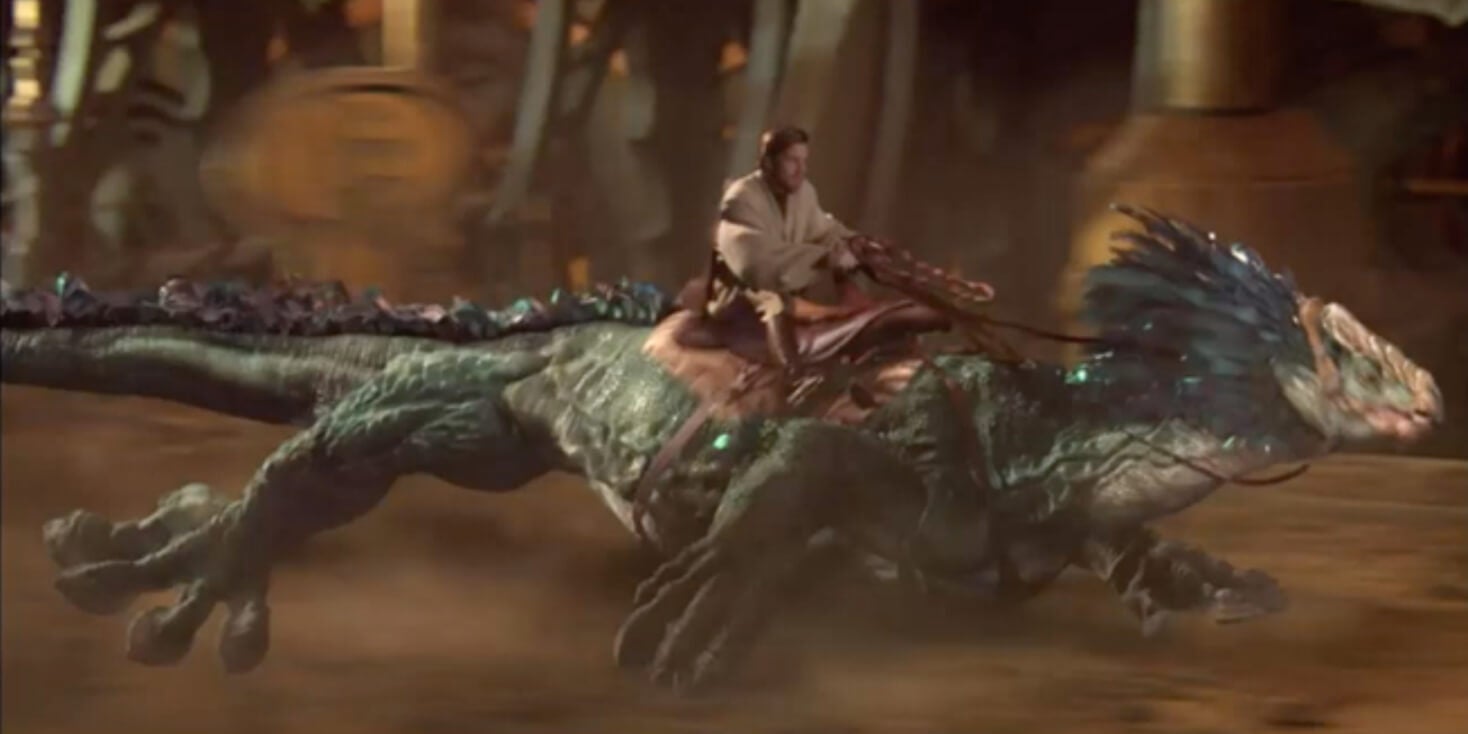
The brilliant scales and brightly colored plumage on varactyl sets them apart from many Star Wars creatures. Other creatures Lucas and his team masterminded often lack the genuine beauty of these loyal beasties. Obi Wan Kenobi rode one of these glorious reptiles during his fight with General Grievous.
Dewback
They may not be the most exciting Star Wars creatures, but dewbacks are hardy, capable, and instantly recognizable. Primarily ridden by moisture farmers, a specialized class of sandtroopers called dewback troopers also use them as beasts of burden.
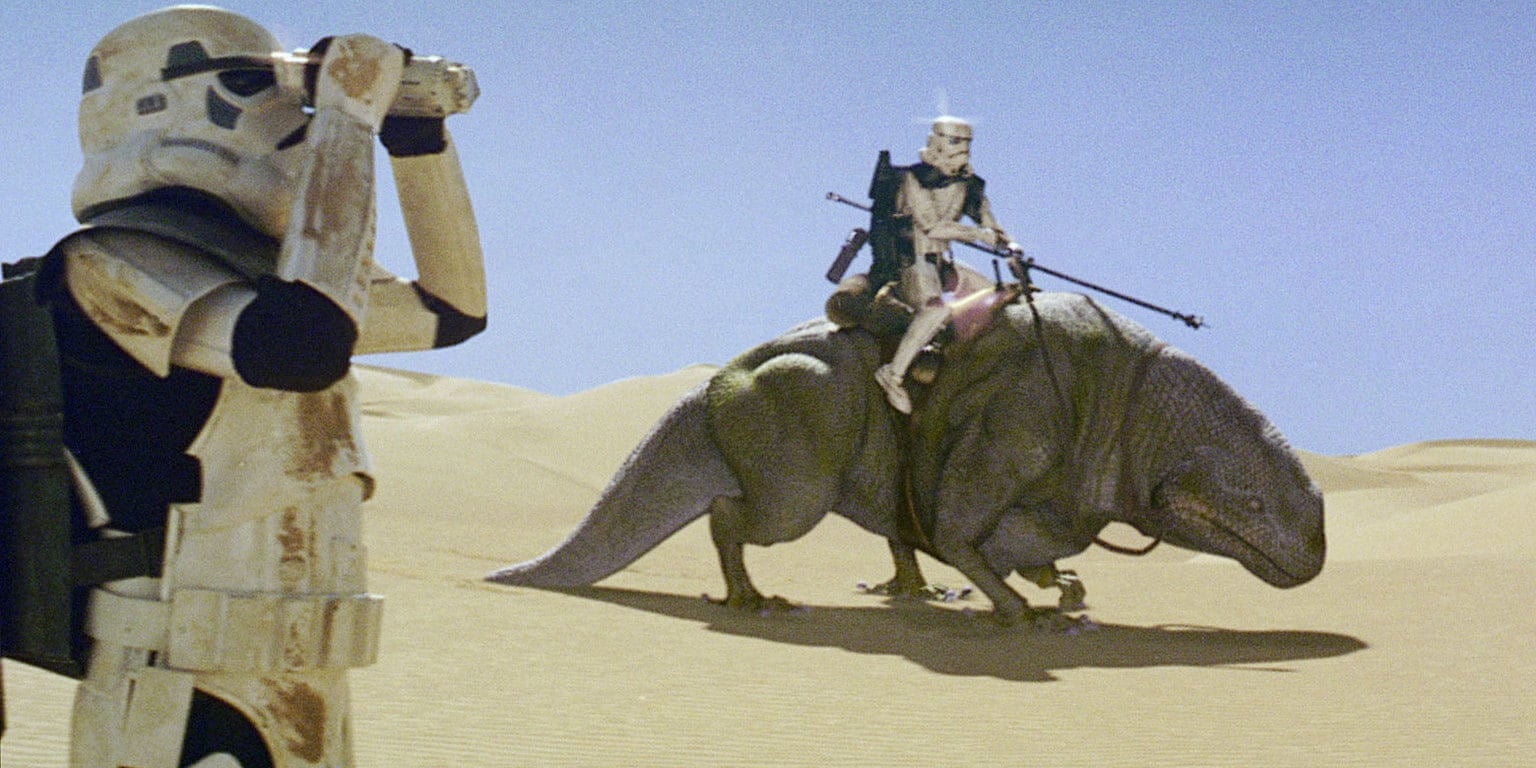
Sturdy, strong, and difficult to spook, dewbacks are the ideal mount. They tend to lumber along slowly but are capable of brief bursts of surprising speed. They are at home in the pressing heat of Tatooine and unbothered by choking dust and sand. Over the course of several films, starting with A New Hope, they’ve conquered Tatooine’s harsh deserts.
READ MORE:
- The fascinating history of the Star Wars movie logos
- The most powerful Marvel characters: Heroes, villains, and gods
- Pixar’s 8 best short films
Dangerous Star Wars creatures
While snuggly little fur balls and capable, speedy mounts are well and good, we all crave a little danger. Our final category of Star Wars creatures includes the deadliest of the bunch. Well-equipped with loads of teeth, claws, and plenty of murderous intent, these creatures could take your face off.
Acklay
These toothy Star Wars creatures deserve a shoutout for falling under both the “rideable” and “dangerous” creature banners. Acklay resemble a praying mantis and are native to the fertile planet Vendaxa. Crustaceous carnivores, acklay are formidable creatures that most would balk at taming. After the Geonosians attempted to use one to execute Obi Wan Kenobi (along with Padme and Anakin, of course), we saw how formidable these creatures could be as mounts.
A sturdy carapace, which covers its entire body, protects this massive beast. Three eyes allow them to track their foes, as do the small organs beneath their chins, which can detect body electricity. Their mouths are nothing but razor-sharp teeth, which they use to tear apart their prey. Often, acklay live underwater and only take to land when hunting.
Nexu
Another deadly addition to the prequel trilogy, nexu are agile predators native to the planet Cholganna. Four-eyed (literally) and sporting far too many teeth, these sleek felines resemble lions combined with a few reptilian characteristics. Though they are quite formidable as hunters, the nexu’s fragile skeletal structure makes them vulnerable to brute force. Instead of engaging in open combat, nexu tend to prefer stalking and ambushing their prey.
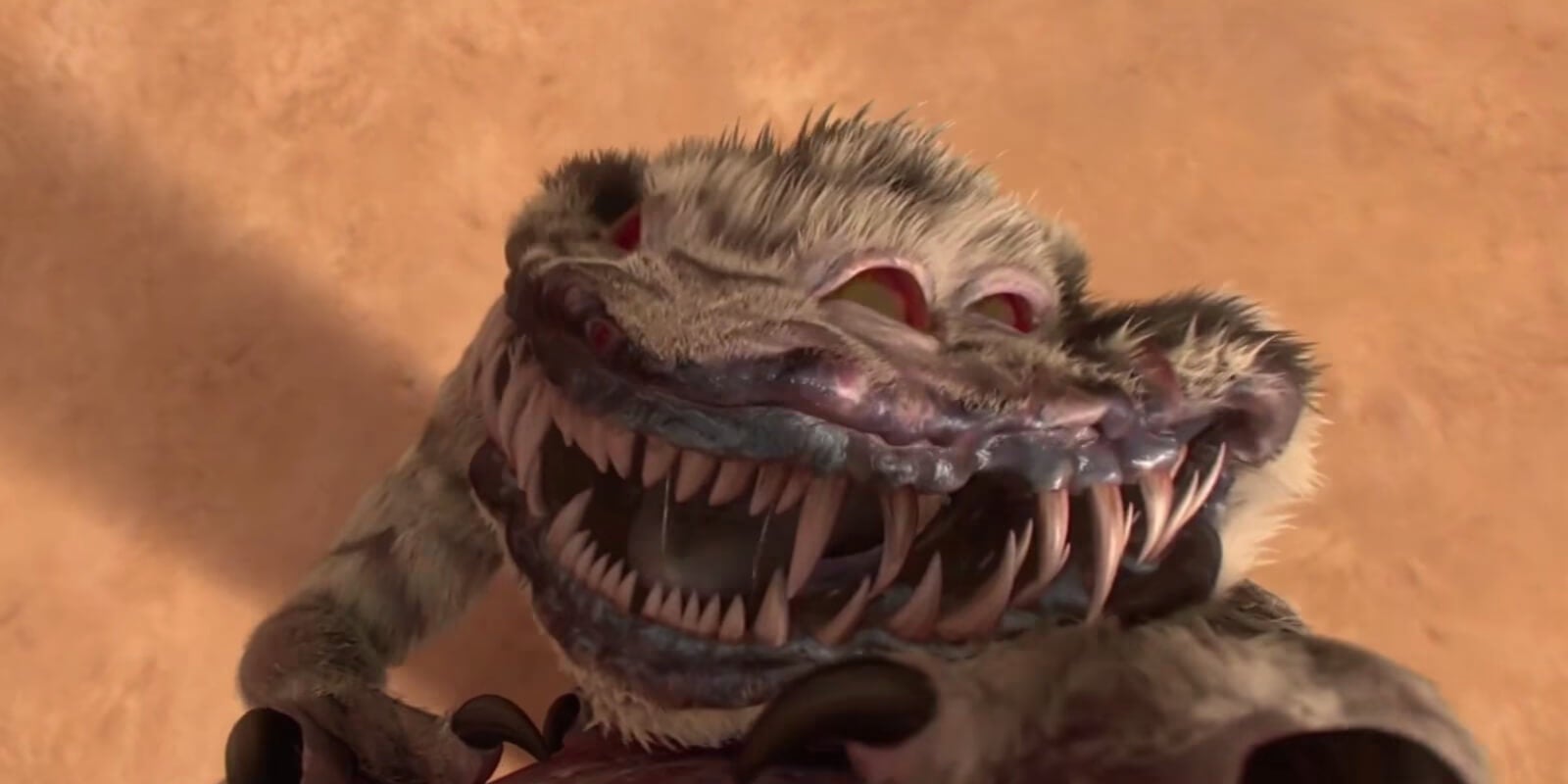
Tan fur helps them blend into the dusty prairies of their home planet, and the thin stripes decorating their backs conceal them among trees and thick brush. Their second set of eyes are capable of seeing in infrared, a perfect tool for seeking out hidden prey. A suction-cup adorned tail, which splits near the end, allows the nexu to swing from tree to tree through forests, enlarging their hunting ground and making them formidable foes indeed.
Dianoga
Also known as “garbage squids,” dianoga are some of the creepiest, many-tentacled creatures Lucas’ galaxy has to offer. These omnivorous cephalopods originate on the planet Vodran. We first got a glimpse of one in 1977, when A New Hope came out. When Luke, Leia, Chewie, and Han ended up in the Death Star’s garbage compactor, a lurking dianoga nearly claimed Luke’s life.
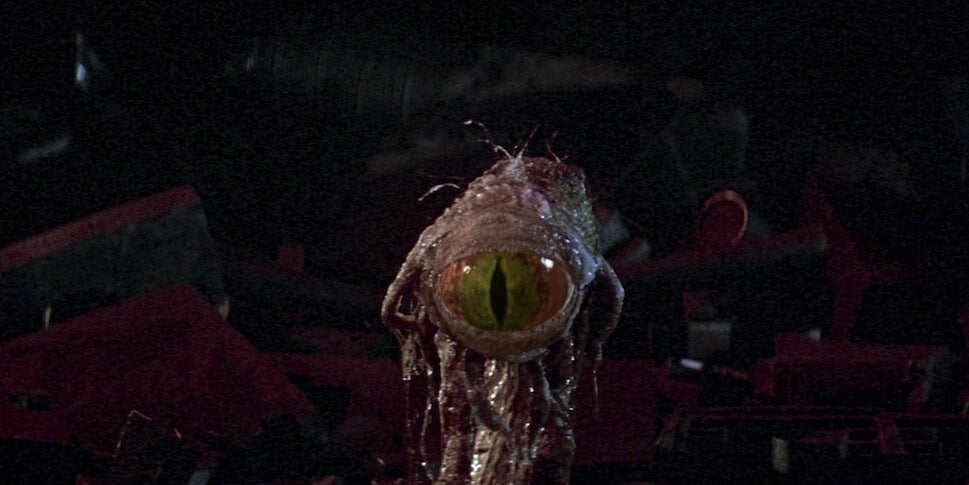
These highly adaptable creatures sport seven beefy tentacles and a long, whiskered eyestalk. A gaping mouth, filled with tearing teeth, is located underneath dianogas’ primary core. Several hearts keep these creepy crawlers going, as does their ability to camouflage in most environments. While dianoga can survive for short periods of time on the surface, they require consistent access to water in order to survive.
Rancor
Described by its creators as a “cross between a bear and a potato,” the rancor is one of the most recognizable Star Wars creatures. Despite the size and lethality of these reptilian carnivores, Jabba the Hutt famously kept one in a pit beneath his palace. It was this massive, deadly creature that nearly ended Luke in 1983’s Return of the Jedi, when Jabba threw him into its pit.
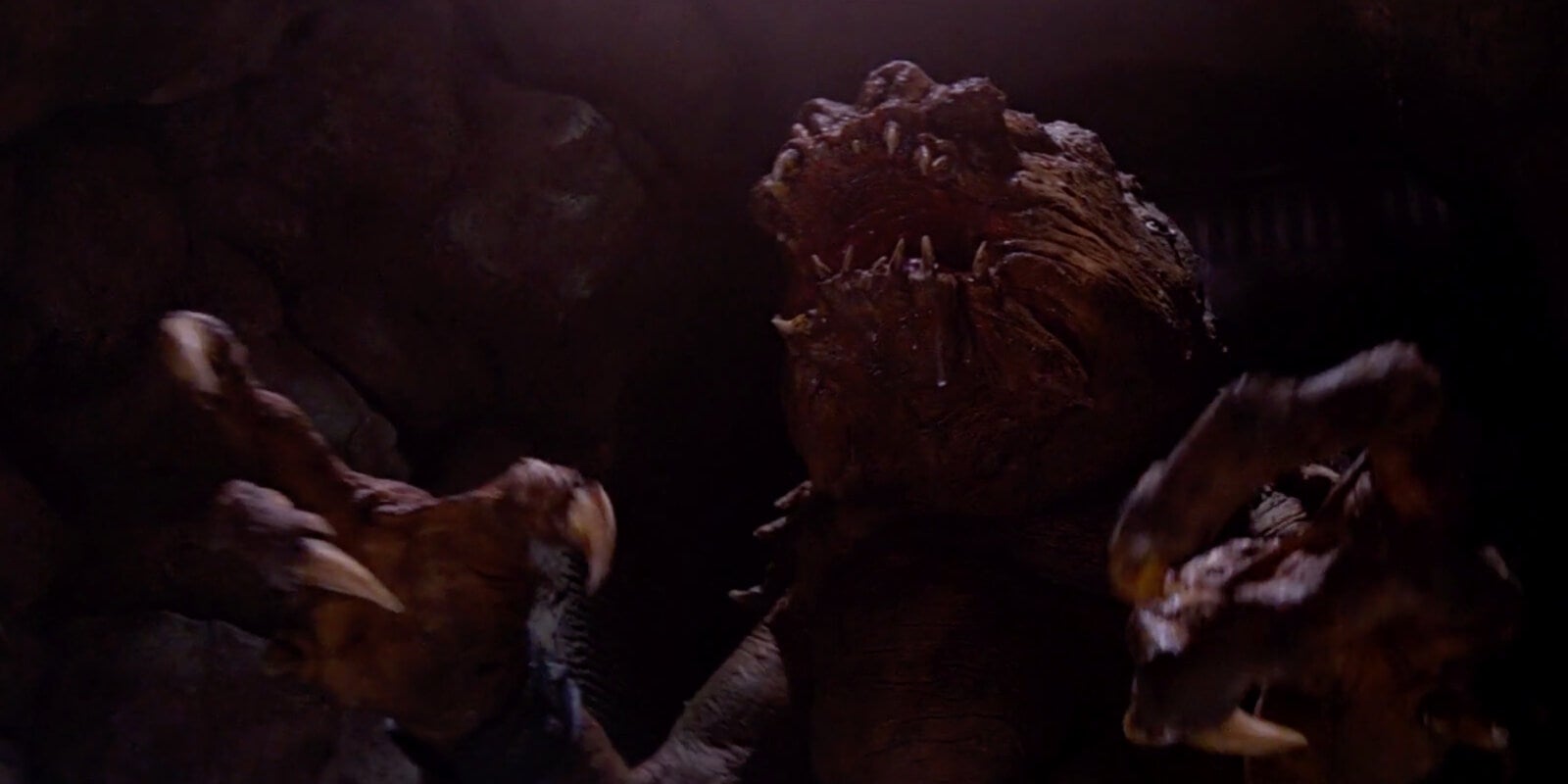
Massive and clumsy, rancor hail from the planet Dathomir. Adults can reach up to 17 feet tall, with armored hides that even blaster fire can’t penetrate. Despite their large size and intimidating appearance, most wild rancor are relatively docile. When provoked, however, they can use their impressive size, powerful jaws, and tearing claws with devastating efficacy.
Sarlacc
One of the most dangerous creatures in the Star Wars universe, the Sarlacc is also one of Lucas’ most popular creations. Back in 1983, Return of the Jedi introduced us to this massive, carnivorous beast. It takes a whopping 3,000 years for a Sarlacc to reach full maturity, at which point they have often grown to a staggering size. Adult Sarlaccs can reach nearly 400 feet in height. They burrow deep beneath the surface of a planet, where they consume any unfortunate creatures that stumble upon them.
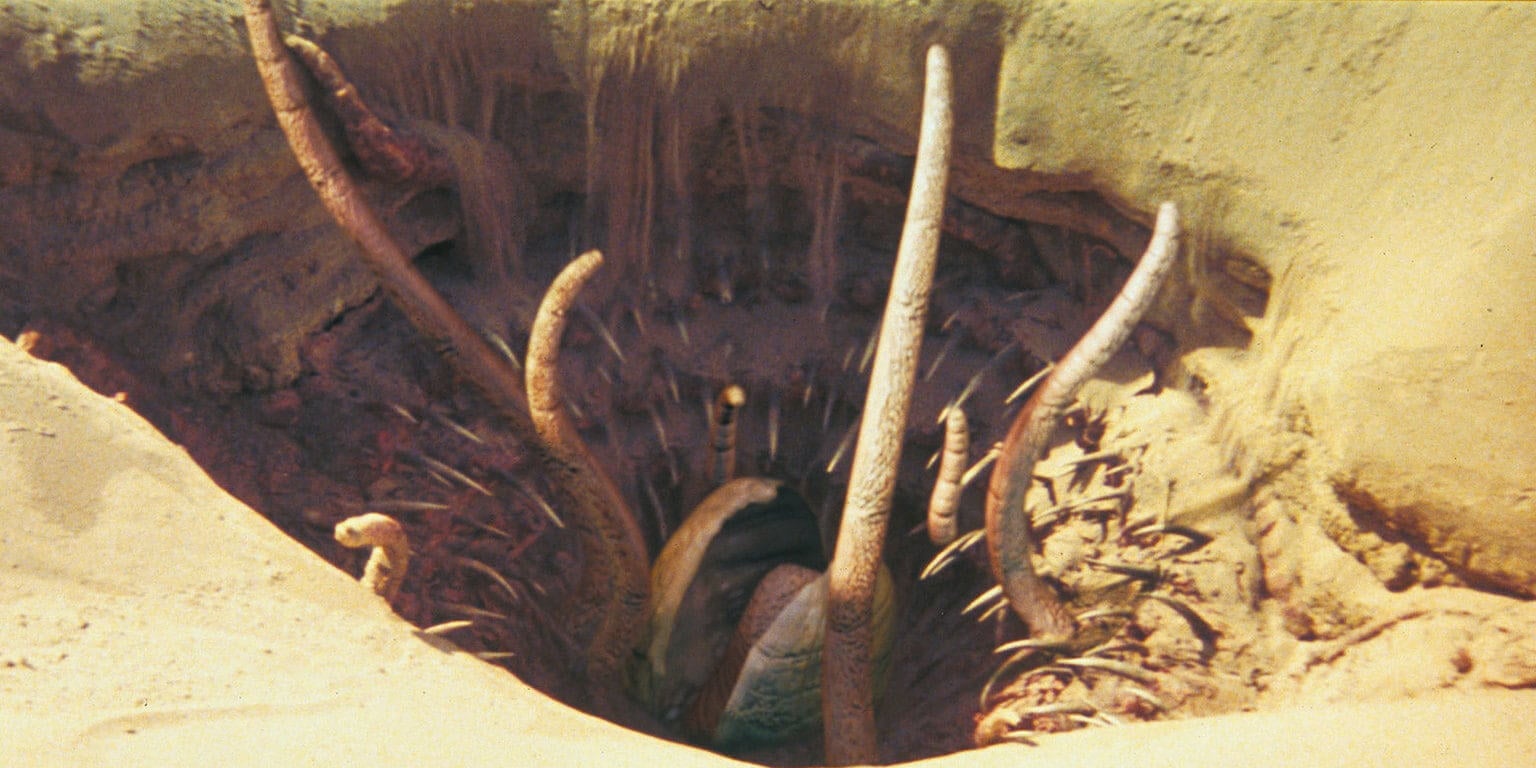
Sarlacc victims suffer a truly terrible death. After the Sarlacc injects its victim with immobilizing toxins that cause constant pain, the massive beast then digests them over the course of millennia. Oh, and did I mention they are conscious the entire time? Long tentacles drag victims into a Sarlacc’s many-toothed mouth, where they are doomed to be endlessly tormented.
READ MORE:
- 9 things you didn’t know about the Millennium Falcon
- The 10 best Star Wars Lego sets
- Ranking the best Marvel series on Netflix

